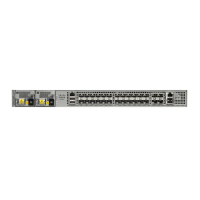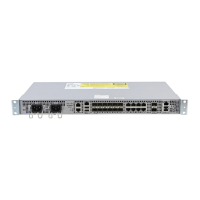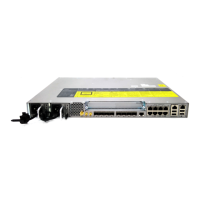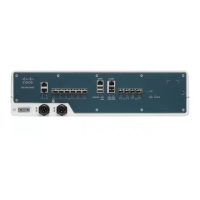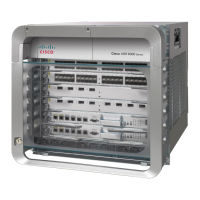Autonomic Networking Infrastructure
The Autonomic Networking Infrastructure (ANI) feature simplifies the network bootstrap functionality by removing the need for any
kind of prestaging, thereby allowing devices to join a domain securely, after which devices can be configured. The goal of the
Autonomic Networking Infrastructure feature is to make new and unconfigured devices securely reachable by an operator or network
management system. This is carried out in the following steps:
1
One device is defined and configured as the registrar. The registrar is the first autonomic domain device.
2
The network administrator collects a list of legitimate device identifiers of the devices to be added to the network. This list controls
the devices that are added to the autonomic domain. Devices are identified by their unique device identifier (UDI). The list is
compiled as a simple text file, one UDI per line. This step is optional because in the absence of a whitelist, all devices are allowed
to join the domain. A whitelist is an approved list of entities that is provided a particular privilege, service, mobility, access, or
recognition. Whitelisting means to grant access.
3
The whitelist of known devices is uploaded to the registrar as part of its configuration. This step is optional.
4
Any new autonomic device that is directly connected to the registrar, or another already enrolled domain device, will automatically
receive a domain certificate from the registrar.
5
The autonomic control plane is automatically established across the autonomic domain to make new devices reachable.
The benefits of Autonomic Networking Infrastructure are as follows:
•
Autonomic discovery of Layer 2 topology and connectivity by discovering how to reach autonomic neighbors.
•
Secure and zero touch identity of new devices by using the device name and domain certificate.
•
A virtual autonomic control plane that enables communications between autonomic nodes.
Autonomic behavior is enabled by default on new devices. To enable autonomic behavior on existing devices, use the autonomic
connect command. To disable, use the no form of this command.
The components of autonomic networking are as follows:
• Registrar—A domain-specific registration authority in a given enterprise that validates new devices in the domain, provides
them with domain-wide credentials, and makes policy decisions. Policy decisions can include whether a new device can join a
given domain based on a preloaded whitelist. The registrar also has a database of devices that join a given domain and the device
details.
• Channel Discovery—Used to discover reachability between autonomic nodes across nonautonomic Layer 2 networks.
• Adjacency Discovery—Used to discover autonomic neighbors. Adjacency discovery is done on Layer 3. It is also possible to
discover autonomic neighbors across pre-established Layer 3 generic routed ncapsulation (GRE) tunnels.
4

